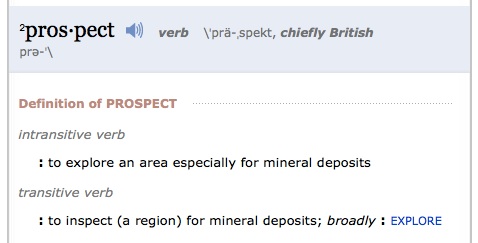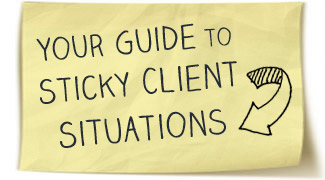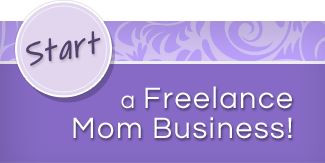
Originally, prospecting was a mining term:
It was the process of searching for something valuable, the initial exploration of an area to see if it was worth actually mining.
So it’s no surprise that in business, where the most valuable thing to search for is clients (a.k.a. more business) it’s taken on a different meaning:
The process of finding prospects for your business has four main steps:
- Identify your ideal client
- Define your marketplace (where you’ll find those clients)
- Create a system to qualify leads
- Design infrastructure to get leads coming to you (inbound marketing)
On our Business Plan Development Worksheet, steps 1, 2, and 5 correspond to questions 5, 6, and 7, so you may have already worked through these, but today we’re going to look at them specifically with prospecting in mind.
Identify Your Ideal Client
You can’t find people to approach with your products or services if you don’t know who the person who needs those products or services and is prepared to buy them is.
Notice there are two aspects to your ideal client:
- need
- readiness to make a purchase to fill that need
This small difference in perspective is an important shift for many self-employed women.
The Less-than-ideal Client: A Quick Case Study
I’ve heard from countless writers, for example, who see websites that are in desperate needs of rewrites. The copy isn’t clear. There is no means to purchase, or it’s hard to find. And there are glaring typos.
When they send these “prospects” their best introduction letter, they hear nothing. Or, even worse, “Great! Thanks for helping us with that,” or, “You’re right. Can you rewrite 20 pages for us for $100?”
Though these website owners need to have their pages rewritten, they aren’t ready to spend money to fill that need. You can use this example for whatever profession you are in because this example exists in every profession.
So, spend a few minutes (if you haven’t done this already) thinking not only about who you imagine as the ideal client you’d like to work with, but also who can pay your right price.
Some coaches I know recommend self-employed women approach businesses in the $1-5 million per year range, because they have a budget with room but don’t have all their services covered in house.
But it’s different for every type of freelancer and small business owner.
Ask These Questions to Find Your Ideal Client
We’ve talked in the past about niches—how to find them and whether you should focus on just one—and your ideal client is similar to your niche, but even more specific.
Ask yourself:
- Are you clients individuals or organizations?
- Are they for profit or not?
- Art they local or long-distance?
- What industry are they in?
- How long have they been in business (n/a for many individuals)?
- Who do you report to?
- Any other common characteristics?
- What do you do for them?
- How often are you available to them?
- How do they pay you?
Remember that we’re talking about who you want to work with/attract as clients here, not necessarily who you happen to be working with now because those opportunities came your way.
The Ideal Client Q&A in Action
Say you’re an internet research specialist. You answer:
- Individuals
- n/a
- Long-distance/online
- Writers
- 5+ years
- Directly to author
- Research historical background for novels, present it in reports
- Primarily long-term, flexible deadlines
- In advance by project/request
Great! You need to find historic/period novel writers who have been in the game at least a little while and have the cash flow to pay you in advance and the experience level to assign you projects that need minimal back-and-forth.
How about a grant writer?
- Organizations
- Non-profit
- Local, within greater metro area
- Theater and dance
- 50+ years
- Fundraising or marketing director
- Have children’s programs
- Manage the grant application process from idea generation to mailing, including interviewing organization members as needed and working with staff to outline new programs if necessary
- Frequently early in the process for meetings, but less once writing has begun
- Three payments, up front, milestone, and on delivery, with a bonus if grant is accepted
This grant writer needs well-established theater and dance non-profits in her area that benefit children as well as the greater public and apply for meaty grants through their fundraising or marketing office but don’t have someone on staff to manage the process.
Once you have a clear picture of who your market is, it’s a snap to figure out where those prospects lurk and how to get in front of them.
Define Your Marketplace (Where You’ll Find Prospects)
Tune in next week for step two, where we’ll show you exactly where your ideal clients are hiding.





